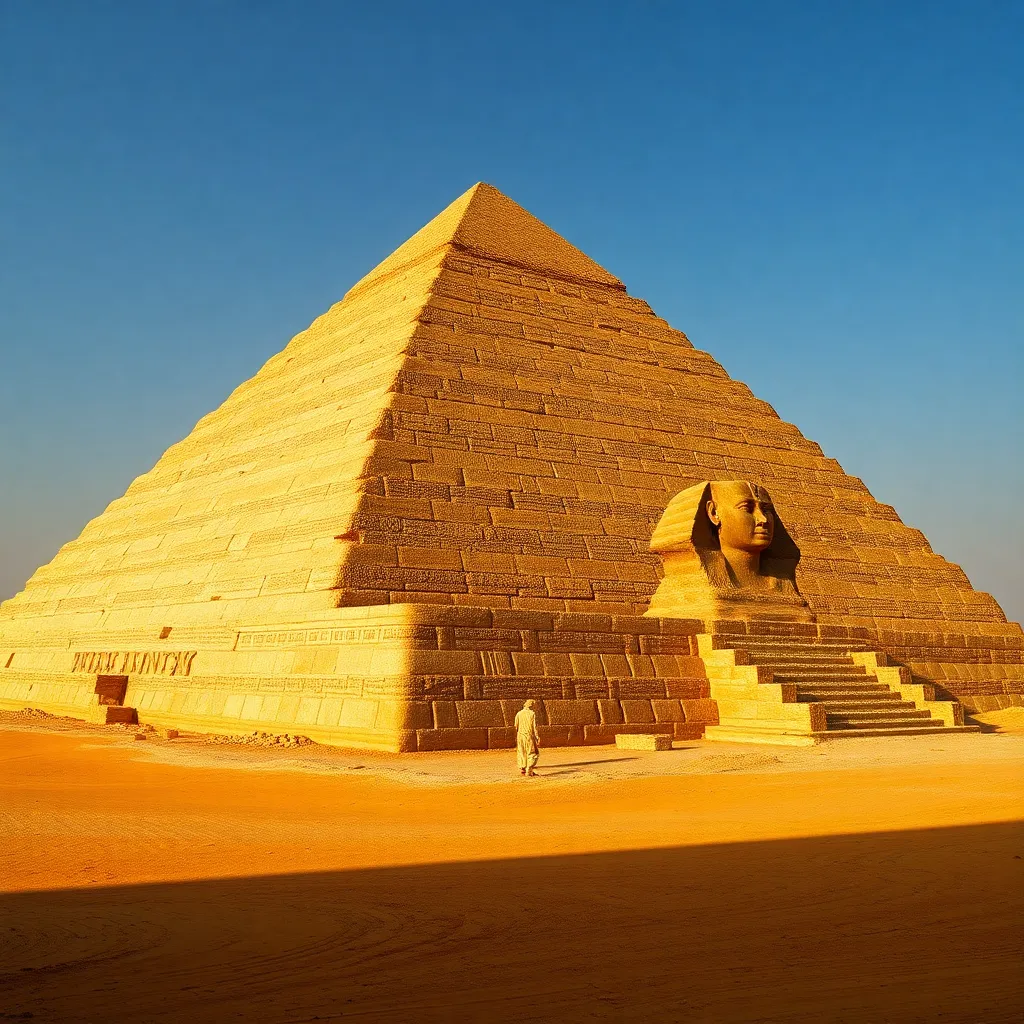The Pyramid of Unas: The First to Inscribe Pyramid Texts
I. Introduction
The Pyramid of Unas holds a unique place in the annals of ancient Egyptian history, not only as the final resting place of Pharaoh Unas but also as the first pyramid to feature the Pyramid Texts. These inscriptions mark a significant evolution in the tradition of funerary texts, providing insight into ancient beliefs regarding the afterlife.
Constructed during a pivotal era in ancient Egypt, the Pyramid of Unas represents the culmination of pyramid construction techniques developed during the Old Kingdom. As we explore the significance of this pyramid, we will delve into its architectural features, the content of the Pyramid Texts, and their influence on subsequent burial practices.
II. Historical Background of Unas
Pharaoh Unas, the last ruler of the Fifth Dynasty, reigned during the 24th century BCE. His rule is characterized by a consolidation of power and a focus on the divine aspects of kingship. Unas was the first king to inscribe the Pyramid Texts within his burial structure, a groundbreaking move that would shape the religious and cultural landscape of ancient Egypt.
The Fifth Dynasty is noted for its advancements in art, architecture, and religious practices. Pharaohs of this period sought to emphasize their divine connection, and Unas was no exception. His reign was marked by significant contributions to temple construction, as well as the promotion of solar worship, which was integral to the religious practices of the time.
III. Architectural Features of the Pyramid of Unas
The Pyramid of Unas is relatively small compared to its predecessors, standing at about 43 meters (141 feet) tall. Its structure is a step pyramid, which was a common design during the Old Kingdom. The pyramid complex includes a mortuary temple, a causeway, and a series of chambers designed for burial.
- Structural Design: The pyramid is built of limestone and features a core of small stones surrounded by a casing of fine Tura limestone.
- Comparison with Other Pyramids: Unlike the grander pyramids of Khufu and Khafre, Unas’s pyramid is less monumental, reflecting a shift towards more personal and smaller burial sites.
- Innovations: The introduction of the Pyramid Texts within the burial chambers is a significant architectural and cultural innovation, setting a precedent for future constructions.
IV. The Significance of the Pyramid Texts
The Pyramid Texts are among the oldest religious texts in the world, inscribed on the walls of Unas’s burial chambers. These texts served multiple purposes, primarily aimed at ensuring the king’s safe passage into the afterlife and his continued protection against malevolent forces.
- Definition: The Pyramid Texts consist of spells, prayers, and hymns intended to guide and protect the deceased in the afterlife.
- Historical Context: Prior to the Pyramid Texts, funerary practices included simpler offerings and inscriptions. The emergence of these texts marked a transformation in the focus of burial practices.
- Transition: The shift from mere burial to a comprehensive focus on the afterlife reflects the growing importance of the concept of resurrection and immortality in ancient Egyptian belief systems.
V. Analysis of the Pyramid Texts Inscribed in Unas’s Pyramid
The texts within Unas’s pyramid are rich with symbolism and reflect the complex theological beliefs of the time. They address themes such as resurrection, divine judgment, and the king’s eternal reign with the gods.
- Overview of Content: The texts contain over 300 spells that cover various aspects of the afterlife, including the journey through the Duat (the underworld).
- Key Passages: Notable passages include invocations of protection from snakes and enemies, as well as declarations of Unas’s divine status.
- Royal Identity: The texts reinforce Unas’s position as a god-king, emphasizing his divine right to rule and his eternal connection to the divine.
VI. The Influence of Unas’s Pyramid on Subsequent Burial Practices
The introduction of the Pyramid Texts in Unas’s pyramid had a profound impact on later burial practices in ancient Egypt.
- Role of Pyramid Texts: Subsequent pharaohs adopted the practice of inscribing texts within their tombs, expanding the repertoire of funerary literature.
- Evolution of Funerary Literature: The Pyramid Texts paved the way for the Coffin Texts and later the Book of the Dead, which continued to evolve in complexity and scope.
- Lasting Impact: The influence of Unas’s Pyramid can be seen in the architectural designs and religious practices of later dynasties, as the focus on the afterlife became central to Egyptian culture.
VII. Archaeological Discoveries and Research
Archaeological efforts at the Pyramid of Unas have yielded significant findings that enhance our understanding of the Old Kingdom and its burial practices.
- Key Findings: Excavations have uncovered remnants of the original burial chambers, as well as fragments of the Pyramid Texts.
- Challenges: The preservation of the pyramid has faced challenges due to erosion and human interference, complicating research efforts.
- Recent Discoveries: Ongoing studies continue to uncover new insights into the construction methods and religious practices of the time, highlighting the pyramid’s importance in ancient Egyptian history.
VIII. Conclusion
The Pyramid of Unas stands as a testament to the evolution of ancient Egyptian funerary practices and beliefs. Its significance extends beyond its architectural features; it marks the inception of the Pyramid Texts, which would shape the religious landscape of Egypt for centuries to come.
Reflecting on the enduring legacy of these texts, we recognize their role in influencing not just burial practices but also the cultural identity of ancient Egyptians. Continued archaeological research will undoubtedly uncover more about the rich tapestry of beliefs and practices surrounding the afterlife in ancient Egypt, ensuring that the legacy of Unas and his pyramid persists for future generations.




